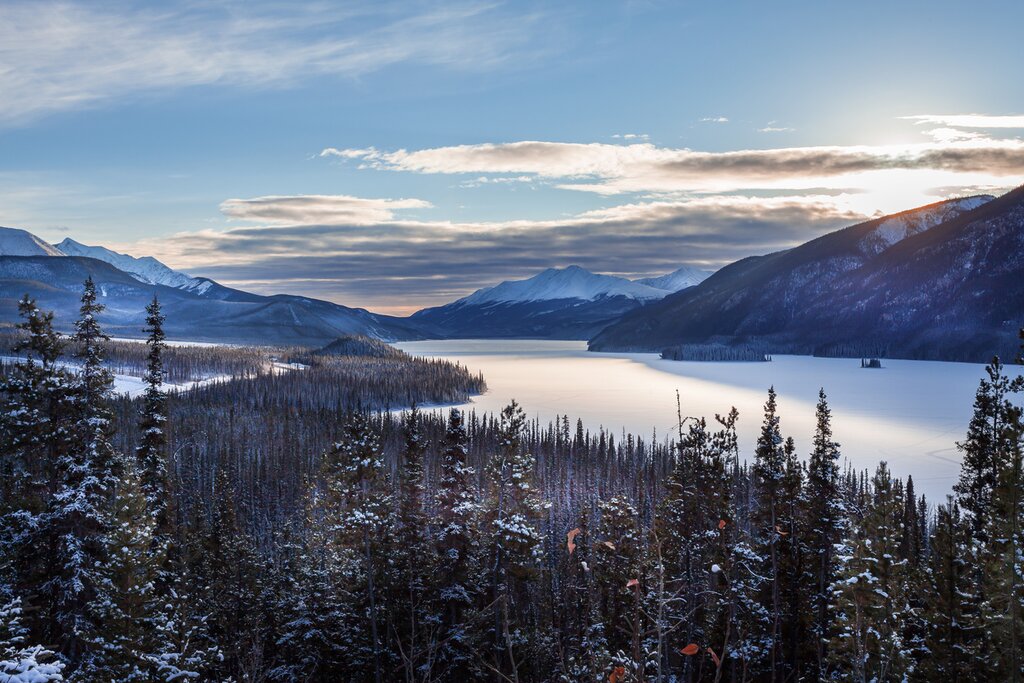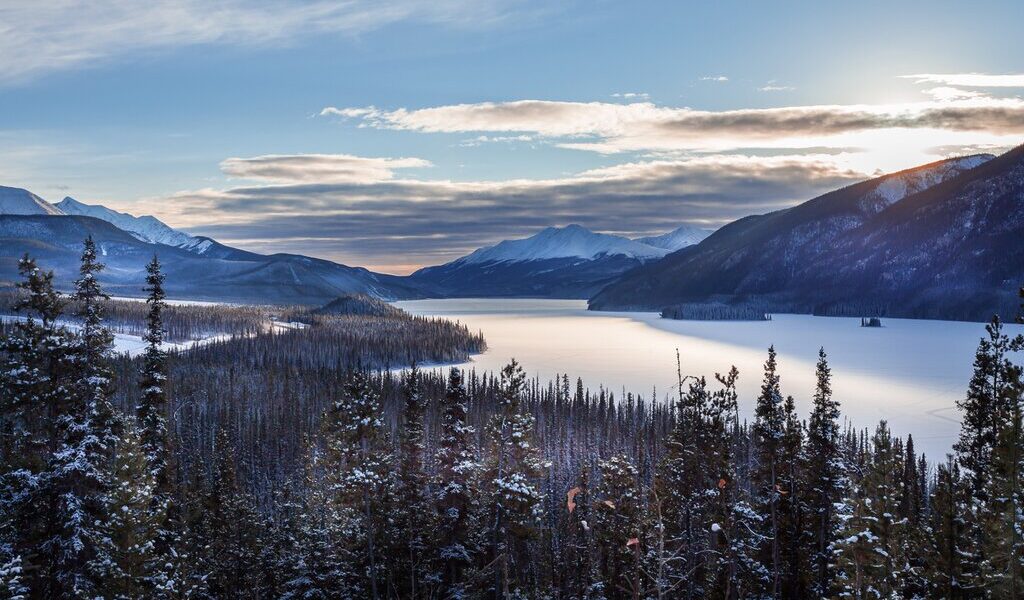
February is midwinter in British Columbia, which means it’s very cold and snowy in most of the province but milder on the coast and in the south. Skiers, snowboarders, and other winter sports enthusiasts are in luck as there’s no shortage of downhill and cross-country snow areas to enjoy. It’s also an ideal time to head north in search of the aurora borealis. Read on to learn more about traveling to British Columbia in February.
British Columbia in February: A Comprehensive Travel Guide
February in British Columbia marks the heart of winter, a season of stark beauty and unique travel opportunities. While often considered one of the coldest months, it offers a distinct charm, particularly for snow sports enthusiasts and those seeking a tranquil escape. However, British Columbia is a province of vast landscapes and diverse geography, resulting in significant variations in climate from its northern reaches to its southern borders, and from the coastal regions to the towering mountains. Understanding these nuances is crucial for planning a successful February trip.
Generally speaking, the northern, inland, and mountainous areas experience colder temperatures compared to the coastal zones. Coastal regions, while slightly milder, tend to be wetter. The southern coast often experiences cool and damp conditions, whereas the northern and higher elevations plunge into subzero temperatures. This dramatic contrast provides a wide array of experiences for travelers, from skiing on pristine slopes to exploring relatively mild coastal cities.
Vancouver, nestled on the southwestern coast, enjoys a relatively temperate winter climate. In February, average temperatures range from a minimum of 37°F (3°C) to a maximum of 46°F (8°C). This makes it a comfortable base for exploring the city and its surrounding areas. However, as you venture further inland, the temperatures decrease noticeably. For example, Kelowna, located in the inland southern part of British Columbia, experiences a colder February with a low of 26°F (-3°C) and a high of 39°F (4°C). This difference underscores the importance of checking the specific weather forecast for your destination before you pack your bags.
The northern parts of the province, unsurprisingly, endure much harsher winter conditions. Fort Nelson, situated in northeastern British Columbia at approximately the same latitude as Juneau, Alaska, provides a stark example. Here, February temperatures can plummet to a minimum of -2°F (-19°C) and rarely rise above a maximum of 17°F (-8°C). Travelers planning to visit these regions should be prepared for extreme cold and ensure they have appropriate clothing and gear.
Crowds and Costs in February
February sits firmly within the peak season for skiing and other snow sports in British Columbia. The mountain resort towns of southern and southeastern British Columbia, particularly those nestled in the majestic Rocky Mountains and the Kootenay Rockies, become hubs of activity. The Vancouver area also experiences a surge in visitors seeking snowy adventures.
Popular resorts such as Whistler, Revelstoke, and Kicking Horse are particularly busy during this time. Securing accommodation in advance is highly recommended, especially if you plan to travel on a weekend. However, there is a silver lining: February tends to be slightly less crowded than January, as many families have returned to their regular routines after the winter holidays. This means you might be able to find a better deal on accommodation during the midweek.
Beyond the bustling mountain resorts, February is generally considered the low season for travel to British Columbia. Vancouver, with its milder climate and urban attractions, continues to draw some visitors, and you may find attractive low-season deals on accommodation. However, smaller towns inland and along the coast may have limited facilities open during the off-season. For instance, visitor information centers at provincial parks are likely to be closed, so be sure to plan ahead and gather information beforehand.
Where to Go in February
The Vancouver area presents an excellent choice for winter travel in British Columbia, particularly in February. The relatively mild climate allows for comfortable exploration of the city’s attractions, including its museums and restaurants. The Vancouver Museum of Art and the Museum of Anthropology are essential destinations for those interested in delving into Canadian art, history, and the rich culture of the local First Nations people. Vancouver’s diverse ethnic makeup also contributes to its vibrant dining scene, offering a wide range of culinary experiences perfect for a midwinter escape.
Vancouver also serves as a convenient base for those seeking snow sports. Its proximity to several top-notch ski resorts in the mountains makes it easy to combine city exploration with outdoor adventures. Consider spending a few days enjoying the city’s amenities before heading north or east to the slopes. Popular resorts such as Whistler, Grouse Mountain, Cypress Mountain, and Squamish offer excellent opportunities for skiing, snowboarding, and snowshoeing in February.
What to Do Beyond the Slopes
Beyond traditional snow sports, February in British Columbia offers a variety of unique activities. If downhill skiing isn’t your preference, consider trying snowshoeing or tubing. Northwest of Vancouver, Howe Sound is home to the Sea to Sky Gondola. A ride on the gondola provides breathtaking views of the fjord and surrounding mountains, and you can then embark on a snowshoeing adventure in some of the deepest snow in North America. Alternatively, rent an inflated inner tube at Tube Park and enjoy the thrill of sliding down the hill.
February also presents an ideal opportunity to witness the mesmerizing northern lights. The long nights and minimal light pollution in many parts of British Columbia create optimal viewing conditions. The farther north you travel, the greater your chances of seeing a spectacular aurora display. Consider venturing to remote locations such as Muncho Lake Provincial Park, situated in northern British Columbia along the Alaska Highway, or Hudson’s Hope, located on the shore of the Peace River in the northeast. Somewhat closer to Vancouver, Sakinaw Lake, northeast of Sechelt on the Sunshine Coast Highway, or Porteau Cove Provincial Park, between Vancouver and Squamish, also offer potential viewing spots.
Events in February
Several noteworthy events take place in British Columbia during February.
Chinese/Lunar New Year, is particularly prominent in Vancouver. Given the city’s large ethnic Chinese population and the nearby city of Richmond, this celebration is a grand affair featuring a massive parade, lively street festivals, and an abundance of delicious food. Note that the timing of Chinese New Year can vary, falling in either January or February.
Victoria Film Festival, held in Victoria, British Columbia’s capital city on Vancouver Island, is a roughly 10-day event showcasing a diverse selection of international and local films.
Vernon Winter Carnival, in Vernon, a town in the Okanagan region, features a variety of events as part of its winter carnival. These events include a vibrant parade, intricate snow sculpture competitions, charming sleigh rides, impressive ice sculptures, and much more.
Traveling to British Columbia in February offers a unique blend of winter adventures and cultural experiences. Whether you’re seeking the thrill of the slopes, the tranquility of snow-covered landscapes, or the excitement of city events, British Columbia in February provides a memorable travel experience.
B-214

